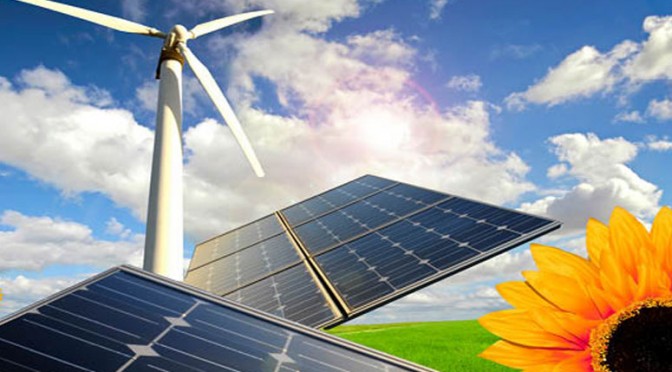4493/5000The capacity of renewable energies worldwide has quadrupled from 2009 to 2019 with a global investment of around 2.6 billion dollars (2.3 billion euros), as revealed by UN Environment on Thursday, highlighting the leadership of solar energy.
At the beginning of 2010, renewables – not counting large hydroelectric plants – generated only 4% of the world’s energy capacity, while at the end of the year it is expected that only solar and wind energy generate 18% of the electricity consumed in the planet.
The report «Global Trends in Investment in Renewable Energy 2019», published by the UN together with the Frankfurt School and Bloomberg New Energy Finance, states that the energy capacity of renewables – excluding large hydroelectric plants – has increased from 414 gigawatts to end of 2009 at 1,650 gigawatts that you will have at the end of 2019.
SOLAR ENERGY, AT THE HEAD OF RENEWABLE
The most notable increase has been the capacity of solar energy, which at the beginning of 2010 stood at 25 gigawatts and at the end of 2019 it will reach 638, which is enough electricity, for example, to provide almost 8 out of 10 homes in United States.
“Few would have dreamed that at the beginning of 2010 the solar would have more added capacity throughout the decade, 638 gigawatts, than any other – renewable, fossil or nuclear. However, the ‘greening’ of the energy system still has a long way to go, ”remarks the report.
“Investing in renewable energy means investing in a sustainable and profitable future, as shown by the incredible increase in renewables in the last decade,” said the new executive director of UN Environment, Inger Andersen, in a statement sent today from headquarters of that agency in Nairobi.
The global investment in renewables in 2018 reached 272.9 billion dollars (246.522 million euros), which although 12% less than in 2017, is three times the global investment made in coal and gas.
Global participation in renewable electricity generation rose 12.9% in 2018 compared to 2017 (11.6%), which meant that 2,000 million tons of carbon dioxide were not emitted.
CHINA, IN FRONT OF GLOBAL INVESTMENTS
Regarding investments, the solar continues to be the one that attracts the most funds, with 133,500 million dollars (120,585 million euros) although it represents a decrease of 22% compared to 2017.
The wind, on the other hand, experienced a 3% investment surge, raising 129.7 billion dollars (117 152 million euros) last year.
China remains the country that invests most in solar energy (88.5 billion dollars, 80 million euros, in 2018) – despite the fact that the investment made last year fell 38% compared to the previous one -, followed by the whole of Europe (59,900 million dollars, 54 124 million euros and a 45% increase compared to 2017) and the United States (42,800 million dollars, 38,673 million euros, and a 6% drop in investment).
In addition, in the last decade the sum of Chinese investment in renewables has reached 758,000 million dollars (685,000 million euros), which is more than double that spent by the second country on the list, the United States, which in ten years he invested 356,000 million dollars (322,000 million euros).
Japan, Germany, the United Kingdom and India are the countries that remain on that list, and all European countries represent a ten-year investment of 698,000 million dollars (630,703 million euros).
While some countries have reduced investments in clean energy, others such as Spain, Vietnam, Ukraine or South Africa have quintupled their investment capacity in 2018.
The executive director of UN Environment considered, however, that “we must rapidly increase the global shift towards renewables if we want to reach international climate and development goals.”
SOLAR AND WIND ENERGY, CHEAPER THAN NON-RENEWABLE
The fall in the costs of electricity from wind POWER and solar energy has meant, according to Bloomberg New Energy Finance chief executive Jon Moore, a change in policies, which were previously focused on coal.
“Now, in many countries of the world, wind and solar is the cheapest option to produce energy,” said Moore, whose company has provided the data for the preparation of the report.


